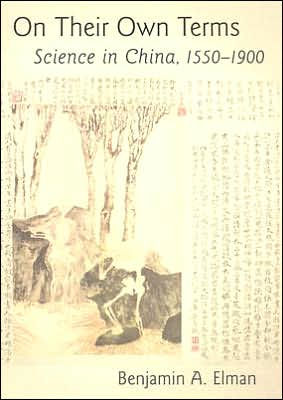Table of Contents
List of Maps, Illustrations, and Tables
Chinese Dynasties
Abbreviations
Preface
I. INTRODUCTION
Prologue
Finding the Correct Conceptual Grid
What Should Be the Literati Theory of Knowledge?
Late Ming Classicism in the Context of Commercial Expansion
Printing Technology and Publishing
Naturalization of Anomalies in Ming China and Early Modern Europe
1. Ming Classification on the Eve of Jesuit Contact
Ordering Things through Names
Collecting the Collectors
Late Ming Statecraft, Mathematics, and Christianity Mathematics, and Christianity
II. NATURAL STUDIES AND THE JESUITS
2. The Late Ming Calendar Crisis and Gregorian Reform
Development of the Ming Astro-calendric Bureau
Evolution of the Late Ming Calendar Crisis
Gregorian Reform
Jesuits and Late Ming Calendar Reform
3. Sino-Jesuit Accommodations During the Seventeenth Century
European Scientia and Natural Studies in Ming-Qing China
Literati Attacks on Calendar Reform in the Early Qing
Ferdinand Verbiest and the Kangxi Emperor
4. The Limits of Western Learning in the Early Eighteenth Century
The Kangxi Emperor and Mei Wending
The Rites Controversy and Its Legacy
French Jesuits in the Kangxi Court
The Newtonian Century and the Limits of Scientific Transmission to China
5. The Jesuit Role as Experts in High Qing Cartography and Technology
Mensuration and Cartography in the Eighteenth Century
Cartography, Sino-Russian Relations, and Qing Imperial Interests
The Jesuit Role in Qing Arts, Instruments, and Technology
III. EVIDENTIAL RESEARCH AND NATURAL STUDIES
6. Evidential Research and the Restoration of Ancient Learning
Early Qing Critiques of Zhu Xi and Wang Yangming
Medical Works and the Recovery of Antiquity
Chen Yuanlong and the Mirror of Origins Encyclopedia
Revival of Ancient Chinese Mathematics
7. Seeking the Truth and High Qing Mathematics
High Qing Views of the Investigation of Things
Mathematics in an Age of Evidential Research
Nativism and Early Nineteenth-Century Mathematics
IV. MODERN SCIENCE AND THE PROTESTANTS
8. Protestants, Education, and Modern Science to 1880
Protestant Missionaries in China Protestants and Modern Science in Shanghai Introduction of Modern Mathematics and the Calculus The Shanghai Polytechnic and Reading Room
9. The Construction of Modern Science in Late Qing China
Early Science Primers Edkins's Primers for Science and the Problem of Darwin in China From the Scientific Book Depot to the China Prize Essay Contest Prize Essay Topics and Their Scientific Content Medical Missionaries since 1872 and Medical Questions as Prize Essay Topics Natural Theology, Darwin, and Evolution V Qing Reformism and Modern Science
10. Government Arsenals, Science, and Technology in China after 1860
From Chinese Working for Missionaries to Missionaries Working for the Dynasty
Post-Taiping Reformers and Late Qing Science
The Jiangnan Arsenal in Shanghai
Technical Learning in the Jiangnan Arsenal and Fuzhou Navy Yard
Naval Warfare and the Refraction of Qing Reforms into Failure
Reconsidering the Foreign Affairs Movement
11. Displacement of Traditional Chinese Science and Medicine in the Twentieth Century
Western Learning Mediated through Japan
Naval Warfare and the Refraction of Qing Reforms into Failure
Science and the 1898 Reformers
From Traditional to Modern Mathematics
Modern Medicine in China
Influence of Meiji Japan on Modern Science in China
APPENDIXES
1. Tang Mathematical Classics
2. Some Translations of Chemistry, 1855–1873
3. Science Outline Series, 1882–1898
4. Partial Chronological List of Arsenals, etc., in China, 1861–1892
5. Table of Contents for the 1886 Primers for Science Studies (Gezhi qimeng)
6. Twenty-three Fields of the Sciences in the 1886 Primers for Science Studies
7. Science Compendia Published in China from 1877 to 1903
8. Some Officially Selected Chinese Prize Essay Topics from the Shanghai Polytechnic
9. Scientific Societies Formed between 1912 and 1927
Notes
Bibliography of Chinese and Japanese Sources
Acknowledgments
Credits
Index




